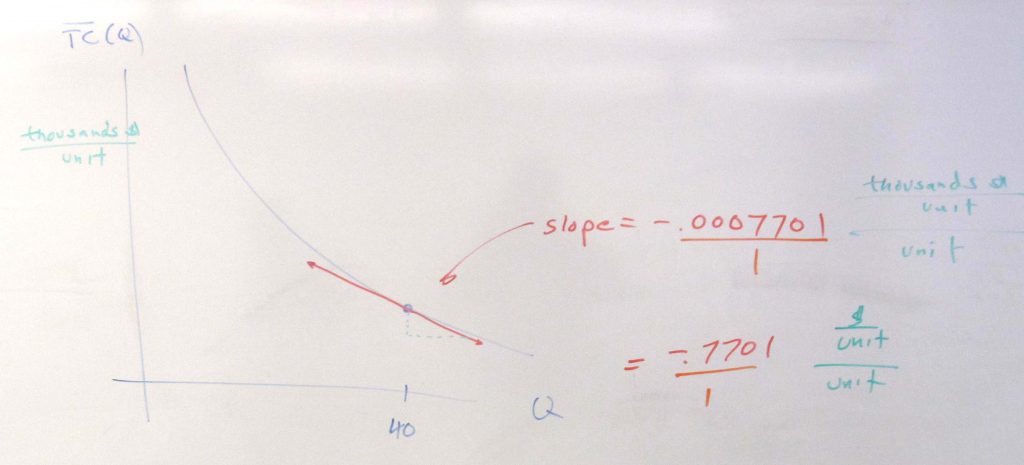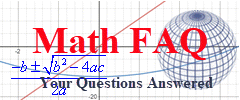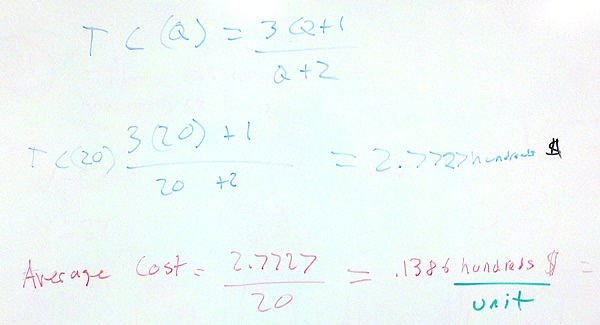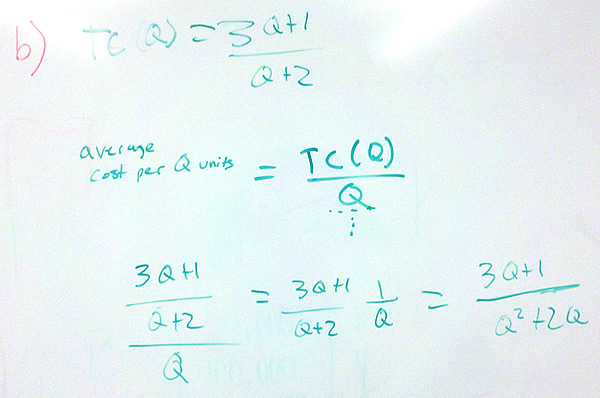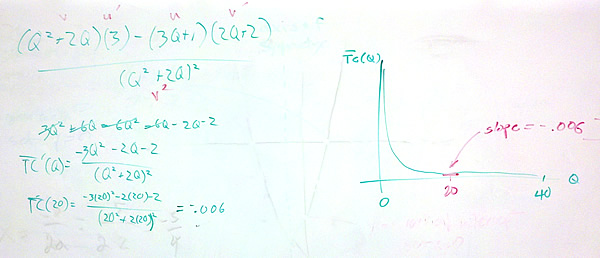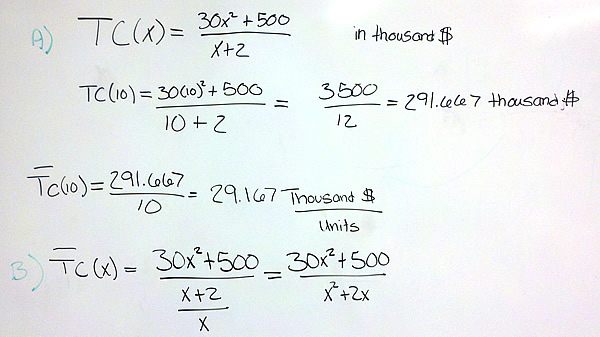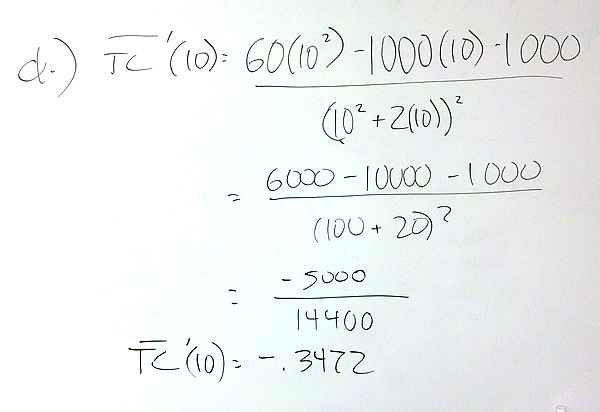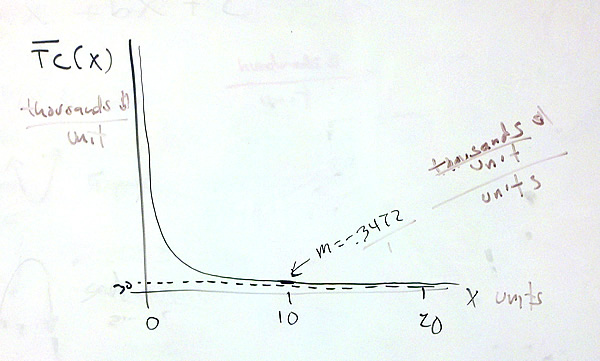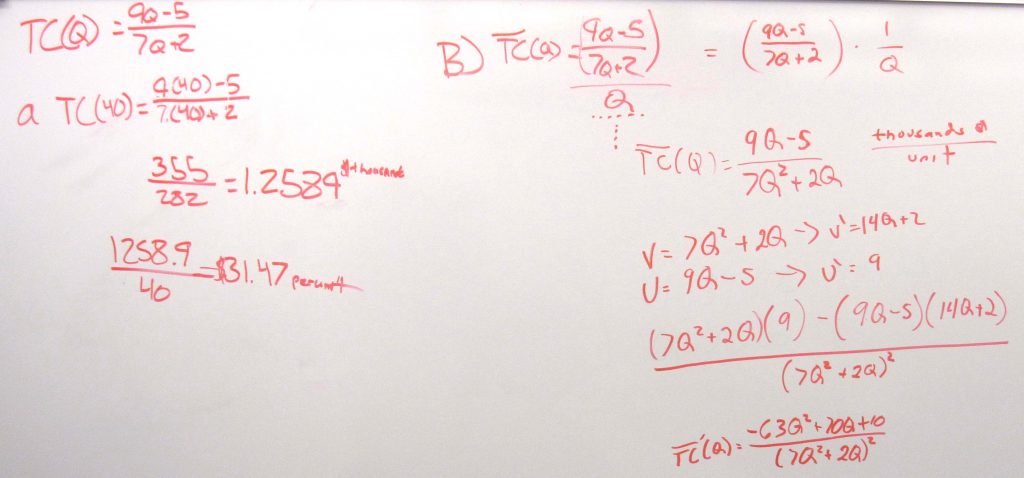In each problem below, the average cost function by dividing the cost function by the variable representing the quantity. For a cost function C(Q), the average cost function is
$latex \displaystyle \overline{C}(Q)=\frac{C(Q)}{Q}$
The marginal average cost function is the derivative of the average cost function.
Problem 1 Suppose the total cost function for a product is
$latex \displaystyle TC(Q)=\frac{3Q+1}{Q+2}\text{ hundred dollars}$
where Q is the number of units produced.
-
- Find the average cost of producing 20 units.
- Find the average cost function.
- Find the marginal average cost function.
- Find and interpret the marginal average cost when 20 units are produced.
This means that each of the 20 units costs an average of .1386 hundred dollars or $13.86.
In this board they have used the fact that dividing by Q is the same as multiplying by 1/Q.
Although it is OK to leave the derivative unsimplified, they need to put in 20. So it is best to do some algebra before putting in the value. Since -0.006 is the slope of the tangent line on the average cost function, the units on it is hundreds of dollars per unit per unit:
$latex \displaystyle \frac{-0.006}{1}\frac{\frac{\text{hundreds of dollars}}{\text{unit}}}{\text{unit}}$
This means that if production is increased by 1 unit, the average cost will drop by 0.006 hundred dollars per unit.
Problem 2 Suppose the total cost function for a product is
$latex \displaystyle C(x)=\frac{30x^{2}+500}{x+2}\text{ thousand dollars}$
where x is the number of units produced.
-
- Find the average cost of producing 10 units.
- Find the average cost function.
- Find the marginal average cost function.
- Find and interpret the marginal average cost when 10 units are produced.
This value tells us that if production is increased by 1 unit, the average cost will drop by 0.3472 thousand dollars per unit or $347.2 per unit. Had they rounded one more decimal place, we would have had this number to the nearest penny.
Problem 3 Suppose the total cost (in thousands of dollars) to produce Q units is
$latex \displaystyle TC\left( Q \right)=\frac{9Q-5}{7Q+2}$
a. Find the the average cost of producing 40 units.
b. Find the average cost function $latex \displaystyle \overline{TC}\left( Q \right)$.
c. Find the marginal average cost function $latex \displaystyle \overline{TC}{{\,}^{\prime }}\left( Q \right)$.
d. Find and interpret $latex \displaystyle \overline{TC}{{\,}^{\prime }}\left( 40 \right)$.
